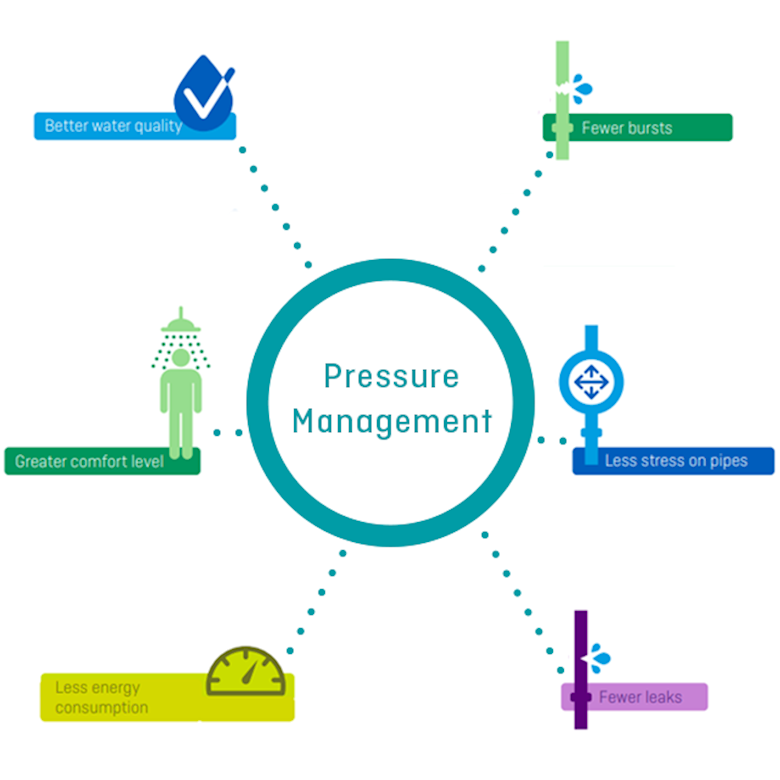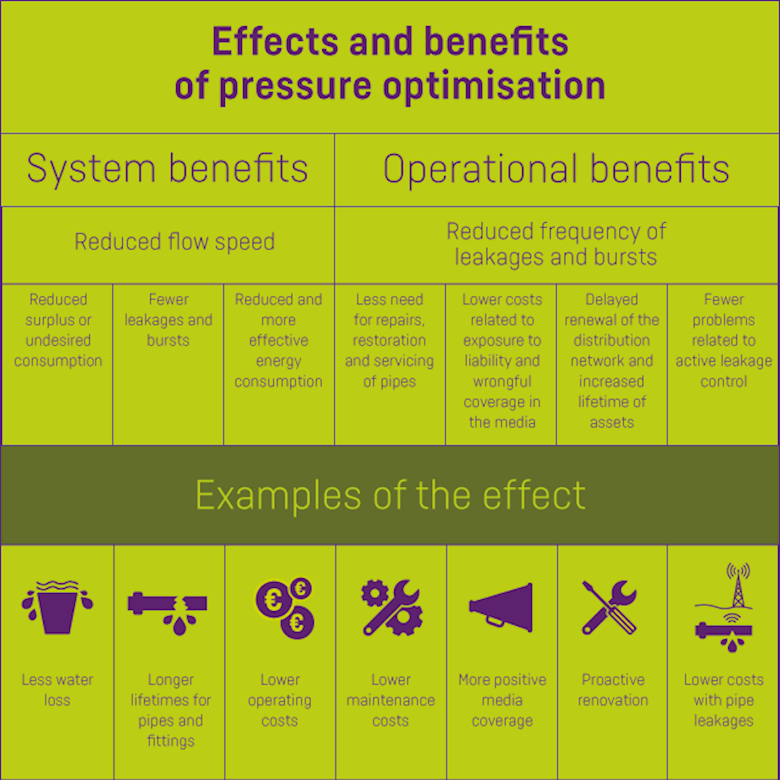Pressure management has proven to be one of the most efficient and economical ways to control bursts and leaks. However, to truly implement and manage the pressure in your distribution network, it must be divided into pressure zones.
You might think that establishing districts and pressure zones in your distribution network is expensive, but digitalised solutions and remotely read water meters has made it far less expensive – especially when taking the opportunities and outcome into consideration – because it is inevitable that your utility will benefit greatly from the investment.
To further substantiate the gains of dividing your distribution network into districts and pressure zones, we’ll give you a real-life example; a local water utility in Denmark managed to find an area with an increased water loss in just a matter of hours – instead of the usual ten days which was the time that they would normally spend investigating in case of irregularities. Aside from locating leaks, the utility also lowered the pressure throughout the distribution network and minimised the overall water loss.
This local utility is not a stand-alone case - in fact, many utilities in Denmark have experienced a significant drop in water loss due to the extensive transparency which they created through dividing the distribution network into smaller segments. And it is important to note, that you can experience decreases in water loss no matter if your water loss level is at 7 % or 27 %.
Working proactively rather than reactively
Most utilities are under regulations that give them the liberty to adjust the pressure to the level that they think is optimal. Even with the many parameters that affect the pressure, many utilities end up managing the pressure based on customer feedback. For instance, if a consumer calls the utility to complain about pressure that is too high or too low, the utility reacts to that feedback. The downside to this is the fact that the consumers who call the utility often live in a critical location, where the pressure is difficult to predict because of all the factors that affect it. This means that the utility does not have optimal conditions for managing the pressure because they work reactively rather than proactively, and this results in a pressure that is either too high or too low. By introducing continuous pressure monitoring in the distribution network, utilities can continuously optimise the water pressure in relation to both consumers and the distribution network.
It is relevant to consider pressure management as an active management tool used to, among other things, lower the amount of water loss. By measuring the pressure at strategic locations in the distribution network and comparing these values with flow measurements from the water meters, the utility can generate the optimal pressure balance.
Continuous management of the water pressure in the distribution network gives both utilities and the consumers several financial and comfort benefits. For the utility, the improvement also includes better asset management and risk management. By delivering a water pressure at the consumer that does not vary significantly despite changes in consumption over time, the utility can proactively
optimise several central parts of the utility:
• Share of Non-Revenue Water (NRW)
• Utility’s efficiency
• Operational and maintenance costs
• Customer satisfaction
How can utilities reap the benefits of district metered areas?
A looped network has the disadvantages of being difficult to control and ultimately ends up being a complex system that is not really understood. Along with the intensifying focus on water loss, energy efficiency and the ability to restrain contamination, utilities need to explore the opportunities towards more efficient operations – and district metered areas is one of those opportunities.
The benefits are many, but they primarily revolve around transparency and optimised operations which results in lowered water loss, lower cost of repairs and lower risk of contamination. However, to fully exploit the potential of setting up district metered areas, remotely read meters must also be set up in each district. It is important to choose a technology that read meters with the right frequency to be able to categorise water loss in each district. Choosing the right technology also makes it easy to establish pressure measurements at several locations as the communication infrastructure used to read the household meters can be used to read the battery-powered pressure sensors.
Combining a district-structured supply grid with remotely-read meters brings real benefits. Metering data increases the value of the investment in the district and makes the fight against water loss far more efficient. The possibility of categorising water loss enables utilities to implement the correct measures in each district and thereby avoid wasting resources on solutions that do not have the desired effect.
With district metered areas and optimal pressure management, water utilities will start using data to ensure efficient and reliable distribution of water to the entire distribution network.
Do you want to reduce your water loss?
Learn more about our smart metering solutions right here.
And get top insights and the latest blog posts delivered to you twice a week on your LinkedIn.
Click here or search for "Kamstrup Water" on LinkedIn.



